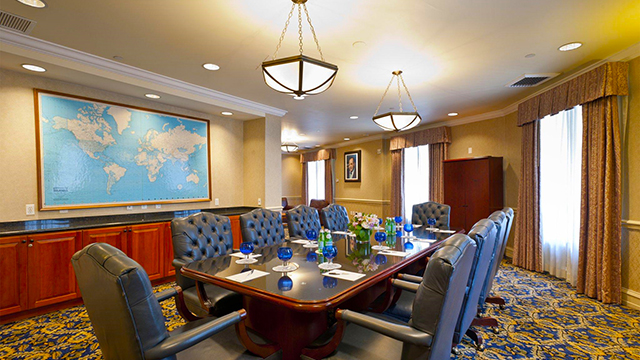NEWS
The birth of the PGA of America and those who guided it with a steady hand

PHOTOS: 100 years of the PGA of America
As America awakened on April 10, 1916, the nation was less than a year from entering World War I. General John Pershing’s troops were chasing the wily Pancho Villa in Mexico.
It was 10 days before Weeghman Park (later known as Wrigley Field) celebrated its grand opening with a Chicago Cubs victory and the New York Times' “Comment on Current Events in Sports” proclaimed that the country’s golfers should adhere to the Rules and “count straight from the beginning.”
That April morning in New York City also brought the Organizing Committee for the Professional Golfers’ Association of America to the second-floor boardroom of the Hotel Martinique on 32nd and Broadway. After a series of preliminary meetings, sparked by a luncheon on Jan. 17, at the Wanamaker Store some eight blocks south of the Martinique, organizers had arrived at a name for the nascent national body.
OFFICIAL CENTENNIAL BOOK: Dettlaff chronicles PGA's 100-year history
It was time to ratify a Constitution and bylaws.
Ninety-two applied for PGA membership, and 78 members elected, including 35 charter members -- 27 of whom had been born overseas. The PGA of America began with seven Sections: Metropolitan, Middle States, New England, Southeastern, Central, Northwestern and Pacific. It would be another five years before those Sections would significantly change their boundaries and PGA Magazine would begin reporting the newly-titled entities.
An Executive Committee of 24 members, a forerunner to a Board of Directors, was assembled from the seven Sections to operate the PGA. Among the notables of that group were future PGA Presidents Jack Mackie (Metropolitan) and George Sargent (Northwestern); and an enterprising assistant professional, James Maiden, employed at Nassau Country Club in Glen Cove, N.Y. It was at that club that Maiden sold a putter, nicknamed “Calamity Jane,” to a young prodigy, Bobby Jones. James and his brother, Stewart, were credited with helping teach Jones the golf swing.
The Executive Committee appointed Robert White, from St. Andrews, Scotland, as the first PGA President. A former schoolteacher turned head professional at Wykagyl Country Club in New Rochelle, N.Y., White was a multi-talented man and his experience enabled him to bring people together. He also was a skilled clubmaker and co-founder of the Professional Golf Company in suburban Chicago. When White emigrated to the U.S. in 1894, he pursued agronomy and began laying out golf courses.
White became the first turf expert among the professional greenkeepers of his time. By 1947, he was one of 13 founders of the American Society of Golf Course Architects. His reputation as a course builder put him in position to recommend professionals for employment.
Author Herb Graffis speculated in 1975 that it was “quite possible that either by blood, marriage, or occupational sponsorship White was related to about a third” of the PGA’s founding members.
THANK YOUR PGA PRO: Post a message at #ThxPGAPro
What White represented was the necessity for a PGA Professional to be a symbol of versatility, resourcefulness and guidance. Such professional influence enabled a club or public facility to survive as the country moved through two World Wars and a Great Depression.
From that humble 1916 gathering in a New York City boardroom, the PGA of America began a remarkable journey to build leaders for an expanding golfing public. The PGA’s founding fathers, had they survived to celebrate the Centennial, might be uplifted by their mission.
By their passion, vision and organization, they had elevated the standards of the profession, promoted interest in golf nationally and laid the seeds for what would become one of the world’s largest sports organizations.